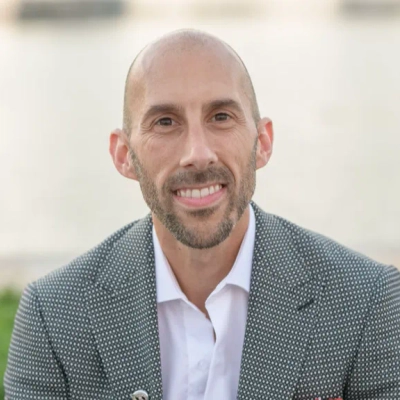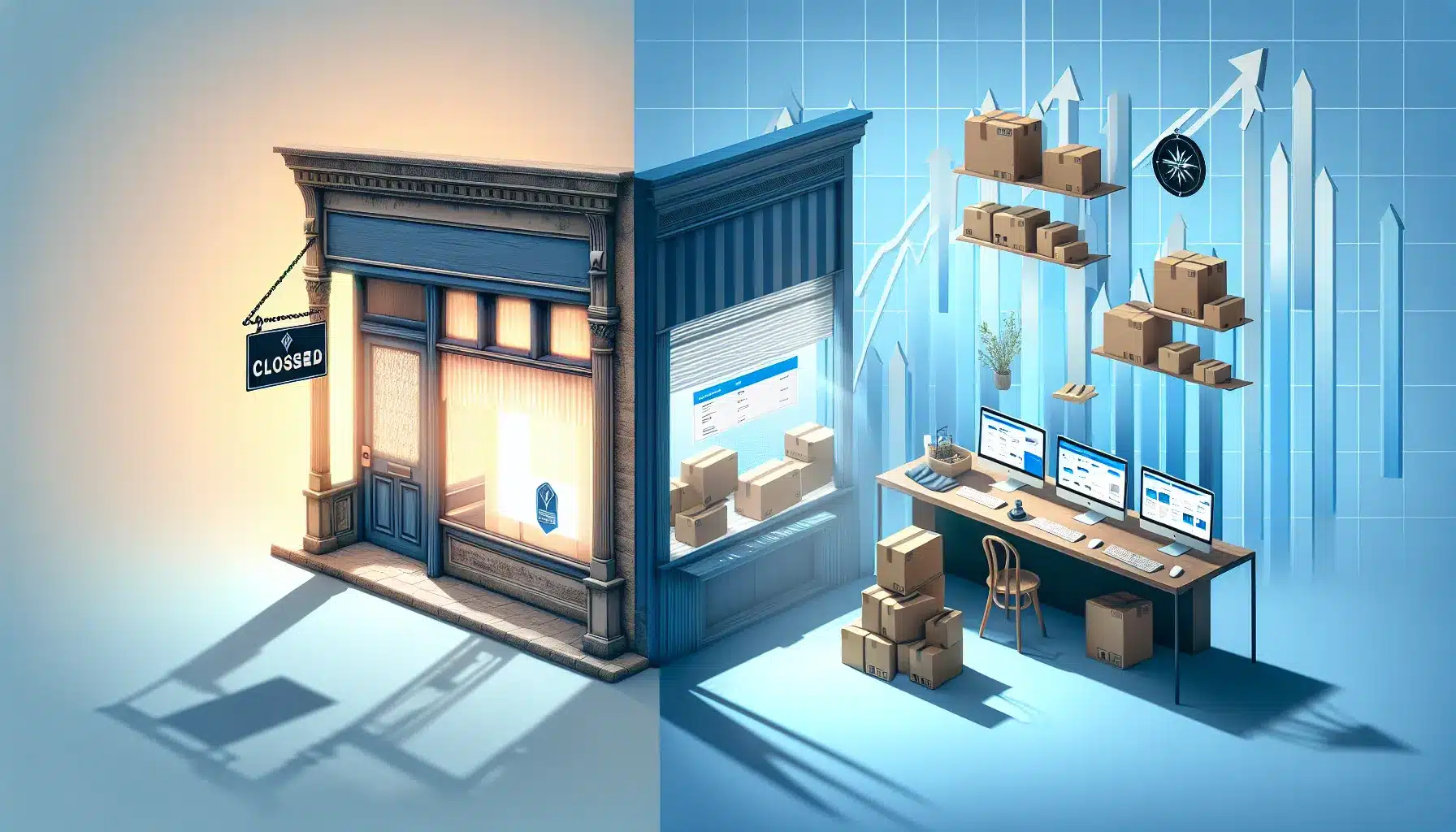21 Critical Pivots That Strengthened Small Businesses During Crisis
“What was one critical pivot your small business made during a crisis that ultimately strengthened your company? How did this adaptation change your business model going forward?” Here is what 21 experts have to say.
- Emergency Pet Care Mode Becomes Core Business
- Subscription Model Replaces One-Off Client Engagements
- Digital Transformation Opens New Revenue Channels
- Self-Service Platform Transforms High-Touch Technical Sales
- Digital Sales Process Improves Efficiency and Reach
- Virtual Consultations Enhance HVAC Customer Relationships
- Multiple Local Suppliers Build Stronger Community Connections
- Monthly Service Plans Secure Consistent Revenue
- Internal Mentorship System Transforms Staffing Challenges
- Digital Communication Streamlines Customer Service Process
- Web Design Evolves Into Performance Marketing Partnership
- Local Content Focus Bridges Customers with Experts
- Exterior-First Services Create Permanent Customer Options
- Own Brand Development Controls Quality and Margins
- Remote-First Strategy Expands Business Beyond Zip Code
- Contactless Service Upgrades Modernize Customer Experience
- Cross-Training Employees Delivers Operational Flexibility
- Online Education Strategy Enhances Sustainable Brand Values
- Remote Technology Pivot Creates Scalable Business Model
- Virtual Workplace Shift Diversifies Income Streams
- Rapid Response System Builds Long-Term Customer Loyalty
Emergency Pet Care Mode Becomes Core Business
One of the most defining pivots we made at Pawland happened during an unexpected surge in demand for last-minute pet care. Initially, our model was built around scheduled bookings — carefully planned home boarding and sitting services. But during times of travel uncertainty and sudden emergencies, especially post-pandemic, pet parents needed immediate and reliable support.
Instead of resisting this unpredictability, we leaned into it.
We built an “Emergency Pet Care Mode” into our platform — allowing verified sitters to opt into rapid response availability with adjusted pricing, instant matching, and priority communication protocols. What started as a crisis fix evolved into a permanent feature that now accounts for a meaningful portion of our bookings.
The real shift wasn’t just operational – it was philosophical.
We transitioned from being a scheduled pet care company to becoming a trusted safety net for pet parents. That mindset now drives our product roadmap.
My advice to fellow founders:
Sometimes the crisis is your customer showing you what they always needed — just louder than before.

Subscription Model Replaces One-Off Client Engagements
One of the most critical pivots we made came during the early months of the pandemic. Like many small businesses, we were heavily reliant on in-person interactions, and overnight that entire channel disappeared. Instead of waiting it out, we doubled down on digital—not just by moving our services online, but by rethinking the business model to build recurring value.
We shifted from one-off engagements to a subscription-style model that emphasized ongoing support, digital resources, and virtual community. It wasn’t just about delivering the same service over Zoom—it was about designing an entirely new experience that worked in a remote-first world. That meant investing in scalable systems, packaging knowledge in ways that could be reused, and creating new touchpoints that kept customers engaged between live interactions.
The immediate result was survival—we maintained cash flow at a time when many peers were struggling. But the long-term impact was growth. That pivot unlocked a more resilient model, with predictable revenue streams and broader reach beyond our local market. What started as a crisis response turned into a competitive advantage, because we weren’t tied to geography or face-to-face delivery anymore.
Looking back, the lesson was clear: in moments of disruption, the businesses that thrive are the ones that treat constraints as catalysts. By asking “what does this make possible?” instead of “how do we hold on to what we had?” we built something stronger than before. That mindset shift—seeing crisis as an accelerant—has influenced every strategic decision since. It’s made the company leaner, more adaptable, and more customer-centric than it ever was pre-crisis.
Digital Transformation Opens New Revenue Channels
Every small business faces moments where survival depends on the ability to pivot. Crises expose vulnerabilities, but they also reveal opportunities for reinvention. One of the most critical pivots my business made during a crisis not only helped us weather the storm—it fundamentally reshaped our model for long-term growth.
The crisis hit when demand for our in-person services collapsed almost overnight. At first, the instinct was to wait it out, but it quickly became clear that hesitation would cost us everything. Instead, we made a decisive shift: we transitioned our offerings to a digital-first model. What began as an emergency measure—hosting sessions and consultations online—turned into a transformative strategy. It opened up access to clients in new regions, created recurring revenue through subscription services, and gave us resilience against future disruptions.
Previously, our company relied heavily on foot traffic and in-person engagements. During the crisis, we piloted virtual workshops using readily available platforms. To our surprise, attendance increased because people who couldn’t travel now had access. One client even remarked that they felt more connected online because they could engage at their own pace. This success prompted us to invest in building a full digital suite, from an online booking system to on-demand resources. Today, digital services make up nearly half of our revenue—a channel that didn’t exist before the crisis.
This experience reflects a broader trend. According to a McKinsey survey, companies that accelerated digital transformation during crises were twice as likely to outperform competitors in revenue growth post-crisis. The study highlights that adaptation is not just about survival—it’s about creating agility that fuels innovation. By embracing change rather than resisting it, small businesses can strengthen their position long after the crisis has passed.
Our critical pivot—moving from in-person to digital-first—taught us that resilience comes from flexibility. What began as a stopgap became a core growth engine, expanding our reach and stabilizing our revenue model. The lesson for other small businesses is clear: a crisis may force your hand, but the adaptations you make can become catalysts for reinvention. Sometimes, the strongest parts of your business emerge from its most vulnerable moments.
Self-Service Platform Transforms High-Touch Technical Sales
The critical pivot VoiceAIWrapper made during COVID-19 was shifting from in-person technical consultations to self-service implementation, which ultimately transformed us from a high-touch service company into a scalable platform business.
Pre-pandemic, our business model relied heavily on in-person technical workshops where prospects could test voice AI integrations with our engineers providing real-time guidance. When lockdowns eliminated face-to-face meetings, our sales process collapsed – conversion rates dropped 70% because prospects couldn’t get the hands-on experience they needed to build confidence.
Instead of trying to replicate in-person experiences through video calls (which failed miserably), we completely reimagined customer onboarding around autonomous implementation. We built comprehensive sandbox environments, automated setup wizards, and interactive tutorials that guided prospects through voice AI integration without human intervention.
Most importantly, we created working prototypes that prospects could deploy in their own environments within 20 minutes, giving them immediate proof of concept rather than theoretical demonstrations.
This pivot revealed that our “necessary” high-touch approach was actually a barrier to scalability. The self-service model attracted customers we’d never reached before – business owners who were intimidated by technical consultations but comfortable with guided self-implementation.
Customer acquisition costs dropped 60% because we eliminated expensive sales engineering time, while conversion rates actually improved 35% compared to pre-pandemic levels. Prospects preferred the autonomy and could evaluate at their own pace.
The crisis pivot fundamentally changed our go-to-market strategy from consultative selling to product-led growth. We now focus on creating implementation experiences so intuitive that customers can succeed independently, then provide human support only when needed.
This shift enabled geographic expansion without scaling sales teams proportionally. We can serve customers globally through our self-service platform rather than requiring local technical consultants.
The pandemic-forced adaptation became our sustainable competitive advantage. While competitors still rely on high-touch sales processes, we’ve built a scalable platform that delivers faster customer success at lower operational costs.

Digital Sales Process Improves Efficiency and Reach
During a time of crisis, one critical pivot my small business made was transitioning from 100% in-person sales meetings to developing a fully digital sales process. Specifically, when COVID hit, we could no longer start sales conversations with prospective clients at billboard sites, which had always been our best method of closing deals. We transitioned from meeting clients in person to quickly creating virtual walkthroughs, interactive proposals, and consultations via video chat. Interestingly, not only did we keep the sales going, but what we had really done was improve sales efficiency and scalability. Because clients liked reviewing proposals on their own timeline rather than scheduling travel, going forward, the adaptation shifted our business model permanently. In 2024, we adopted a hybrid model for sales efforts where digital tools guide rich conversations and hold the early stages of the sale cycle, while in-person meetings are reserved for the last stages of the sales cycle when it is a valuable client. While the crisis forced innovation, we ended up with an improved, streamlined process that still saves us time and expands reach.
Virtual Consultations Enhance HVAC Customer Relationships
During the pandemic, like many businesses, ALP Heating faced unprecedented challenges that compelled us to pivot swiftly. One critical change we made was the introduction of virtual consultations for our HVAC services. As a family-owned business, we prioritize the safety and comfort of our customers, and with social distancing measures in place, we recognized that some homeowners were hesitant to have technicians in their homes.
By offering virtual consultations, we allowed customers to describe their HVAC concerns through video calls, which enabled us to provide initial assessments without compromising safety. This not only gave our clients peace of mind but also maintained our workflow, allowing us to continue helping families and businesses across the Greater Toronto Area, including Maple and Newmarket, during a time when reliable heating and cooling were essential.
This adaptation significantly altered our business model. We found that many customers appreciated the convenience and efficiency of virtual consultations, and it opened up new avenues for communication that we hadn’t fully explored before. It’s a practice we’ve decided to keep even as restrictions eased. This approach has enhanced our customer relationships by providing a more flexible, personalized service that aligns with their comfort levels and schedules.
Moreover, we’ve strengthened our commitment to preventive maintenance through the ALPCare program, which focuses on proactive care and energy efficiency. By integrating virtual assessments into our maintenance plans, we can identify potential issues before they escalate, ensuring optimal performance and longevity of HVAC systems while minimizing unexpected breakdowns.
In essence, this crisis forced us to innovate and adapt, and we’ve emerged with a more resilient service model. We now blend traditional hands-on expertise with modern technology, which not only meets our customers’ evolving needs but also reinforces our commitment to safety, reliability, and community-oriented service. At ALP Heating, we believe that every challenge presents an opportunity, and this pivot has allowed us to grow stronger and more connected with the families and businesses we serve.

Multiple Local Suppliers Build Stronger Community Connections
Last year when our supply chain was disrupted, I had to switch from one supplier to multiple local suppliers overnight. I was worried about the cost and complexity, but it ended up strengthening our business. By diversifying our supply chain, we reduced risk and built stronger relationships with local partners, which improved delivery times and product quality. This forced us to rethink our business model – from a product-only approach to one where being local and agile are key selling points. We also started offering limited edition, locally sourced products, which our customers loved and which increased loyalty. What was a reactive pivot turned into a long-term strategy that made our business more resilient, adaptable, and community-focused.

Monthly Service Plans Secure Consistent Revenue
During the 2008 recession, we saw a sharp drop in one-time service calls because families were cutting back on anything that didn’t feel absolutely necessary. That was a wake-up call. I realized we couldn’t keep relying on seasonal or emergency treatments to carry the business. So we made a critical pivot and began offering year-round service plans that spread costs out monthly, making them more affordable for customers while giving us consistent revenue. It wasn’t an easy transition at first—people weren’t used to thinking of pest control as a subscription—but we leaned on educating them about prevention rather than just reaction.
That change ended up strengthening the business far beyond the crisis. It gave us stability in cash flow, allowed us to plan staffing more effectively, and built stronger relationships with customers who saw us as long-term partners instead of just a quick fix. From that point forward, service plans became the backbone of PCI Pest Control’s business model, and they’re still what allows us to grow sustainably today.

Internal Mentorship System Transforms Staffing Challenges
When the labor market tightened a few years back, we struggled to keep up with demand because hiring slowed down. Instead of cutting back on appointments, we decided to invest heavily in training and promoting from within. We built a structured mentorship system where experienced technicians helped newer ones master routes more quickly. It took time upfront, but the results were incredible—team morale improved, and productivity shot up.
That pivot permanently changed how we operate. We no longer wait for the “perfect hire”—we develop the right people ourselves. It made us stronger, more resilient, and far less dependent on market conditions. What started as a response to a staffing challenge became a long-term advantage.

Digital Communication Streamlines Customer Service Process
During the pandemic, one critical pivot we made was shifting our customer communication almost entirely to digital channels. Before that, we leaned heavily on phone calls and in-person conversations. But with so much uncertainty, people wanted updates quickly and without the pressure of face-to-face interaction. We rolled out text reminders, service updates, and even post-service follow-ups through our system. At first, it was a scramble to get everything set up, but it immediately gave customers confidence that we were still there for them and adapting to their needs.
That shift ended up changing our business model in a lasting way. Customers came to prefer the flexibility and transparency of digital communication, and our team found it streamlined scheduling and reduced missed appointments. What started as a survival move turned into a long-term advantage, because it made us more efficient and gave customers a smoother experience. Looking back, the crisis forced us to modernize faster, and it put us in a stronger position than before.

Web Design Evolves Into Performance Marketing Partnership
During a slow period at Gallagher Website Design, I realized that by relying exclusively on one-time web design projects, this made our income unpredictable and vulnerable during market dips. Many clients loved their new websites but were lacking the other components of digital marketing that drive traffic to their site. That was the turning point. I decided to pivot and expand the company’s core product offerings to provide ongoing SEO, Google Ads, and digital marketing services on top of web design.
This shift completely changed our business model from project-based to relationship-based. Instead of finishing a site and moving on, we began helping clients grow long after launch, which includes optimizing for leads, rankings, and ultimately conversions. This change created recurring revenue, stronger client retention, and better results for the businesses we served.
Looking back, that pivot didn’t just strengthen our company—it redefined it. Gallagher Website Design evolved from a design firm into a performance-driven digital partner. We now help local businesses not just look good online, but actually grow.

Local Content Focus Bridges Customers with Experts
During the pandemic, one of the biggest pivots we made was shifting from publishing broad pest control content to focusing on local, service-driven articles that connected readers with nearby pest experts. Traffic patterns changed overnight—people weren’t just curious about bugs anymore; they needed quick help at home. That realization prompted us to create content that is far more practical and location-focused.
That change ended up reshaping our whole model. Instead of being just an educational site, What Kind of Bug Is This became a bridge between homeowners and trusted pest control companies. It opened up new partnerships, improved our SEO performance for local search, and created a steady source of leads for our partners. What started as a crisis pivot turned into the foundation of a stronger, more service-oriented business.

Exterior-First Services Create Permanent Customer Options
During the early months of the pandemic, we had to rethink how we handled in-home services almost overnight. Customers were understandably nervous about letting anyone inside, so we quickly shifted our focus to exterior-first treatments and virtual inspections. At first, it felt like a temporary workaround, but it ultimately became a permanent option because customers appreciated the flexibility.
That change significantly reshaped our business model. It showed us that convenience matters as much as effectiveness. We developed new service plans centered on customer comfort and accessibility, which actually expanded our reach. What started as a crisis adjustment became one of the best improvements we’ve made to how we serve our community.

Own Brand Development Controls Quality and Margins
During the post-pandemic economic slowdown, Tudos.no faced a serious challenge: rising logistics costs and increasingly unpredictable consumer demand. Rather than continuing to rely on external brands with thin margins, we made a strategic decision to develop our own premium product lines within our established niche.
This pivot wasn’t simply a cost-cutting measure—it transformed our business model. By creating and sourcing products under the Tudos brand, we gained direct control over pricing, quality, and brand storytelling. It allowed us to protect margins during uncertainty while building stronger customer loyalty.
Most importantly, the shift repositioned Tudos in the marketplace. We evolved from being just another retailer to becoming a creator with a distinct identity. That experience taught us that true resilience often comes from owning more of your value chain. What began as a crisis response ultimately gave us greater independence and a stronger foundation for growth.

Remote-First Strategy Expands Business Beyond Zip Code
When the pandemic hit, my small business, built mostly on in-person strategy sessions and local client work, hit a wall. That crisis forced a major pivot: I transitioned everything to a remote-first model. It wasn’t glamorous. I had to overhaul my workflows, invest in collaboration tools, and rethink how I delivered value without the face-to-face dynamic.
But here’s the twist: it worked. Moving online expanded my reach beyond my zip code and actually streamlined communication. Now, I build client relationships across time zones, and asynchronous work has become a secret weapon for deep focus. That one pivot didn’t just save the business, it rewired how I think about scale and efficiency.
—
I hope this helps! If you want to get to know more details about me, please feel free to reach out below:
Name: Chris Lin
Title: Founder
My Website: https://summitbreezetea.com/
My LinkedIn: https://www.linkedin.com/in/chris-lin-42374a321/?locale=en_US
Headshot: https://drive.google.com/file/d/1rdnr580gi5uvZwG8BTwG15GHc97njjK/view?usp=drive_link

Contactless Service Upgrades Modernize Customer Experience
During the height of the COVID-19 pandemic, our company faced a major challenge: how to continue serving customers who were understandably hesitant about in-person visits. Instead of waiting it out, we made a decisive pivot by introducing contactless exterior treatments and upgrading to digital communication tools for scheduling, billing, and service updates. This change allowed us to keep homes protected while maintaining safety and peace of mind for our customers.
That adjustment didn’t just help us through a crisis—it permanently changed the way we operate. We discovered that customers valued convenience, clarity, and results equally. Those digital systems are now part of our everyday process, streamlining how we communicate and deliver service. What began as a temporary workaround ultimately made our company stronger, more adaptable, and more customer-focused.

Cross-Training Employees Delivers Operational Flexibility
When staffing became tight a few years ago, we realized our systems relied too heavily on a few key individuals. It forced us to cross-train every technician so anyone could step in anywhere. It was stressful at first, but that shift made us stronger and more flexible. Now, our team runs more smoothly than ever because everyone understands the whole picture, not just their part of it.

Online Education Strategy Enhances Sustainable Brand Values
When traditional channels became restricted, we prioritized online engagement. The pivot focused on detailed storytelling, video tutorials, and educational resources that highlighted our organic ingredients. This approach strengthened customer trust and increased global accessibility. We shifted our business model to combine e-commerce with educational experiences. By emphasizing transparency and ethical sourcing, we reinforced our core values and deepened the relationship with our clients.
This adaptation improved our resilience and created opportunities for innovation in connecting with customers remotely. The strategy now forms a central part of our operations, allowing us to deliver luxury organic skincare while promoting awareness about sustainable practices. It also supports holistic wellness experiences for clients worldwide. By integrating education and engagement into our online presence, we have been able to maintain a personal connection and continue building a loyal community that values sustainable beauty.

Remote Technology Pivot Creates Scalable Business Model
“What started as a survival strategy became the foundation for a stronger, more resilient business model.”
One of the most critical pivots we made was during the pandemic, when projects slowed down and client priorities shifted overnight. Instead of waiting for the market to stabilize, we doubled down on technology and streamlined operations to serve customers remotely. This shift not only kept us afloat during the crisis but also unlocked a more scalable, efficient model that continues to drive growth today. What began as a survival move ended up becoming a long-term strength, allowing us to deliver faster, smarter, and with more transparency than before.

Virtual Workplace Shift Diversifies Income Streams
One critical pivot that helped us during the COVID-19 crisis was the shift from physical appearance to virtual workplaces. The shift was not easy, but over time, it strengthened the work dynamics, and most of our workforce still works remotely. Where lockdown forced the closure of offices, businesses faced a drip in their primary revenue streams. For surviving such challenges, we shifted our focus towards completing essential tasks first.
Further, we devised a strategy where we included virtual meets, helped our workforce gather around and help each other, and also mentored employees about ethical values, how to be tech-savvy, and how to celebrate everything online while sharing all challenges and fostering a culture of supporting and coordinating. Where the old model was restricted to a single revenue stream only, this new model of flexible working has opened a diverse income portfolio with premium services, ad revenue, and operational efficiency. The best part about key changes includes resilience to shocks and the ability to handle future disruptions.

Rapid Response System Builds Long-Term Customer Loyalty
The most critical pivot came during a period when storm damage overwhelmed our crews faster than we could schedule repairs. Instead of following the traditional linear model—inspection, estimate, contract, then repair—we created a triage system that prioritized immediate stabilization first. Crews were dispatched to tarp roofs, stop leaks, and secure properties before paperwork was finalized. This adjustment not only prevented further losses for homeowners but also positioned us as a trusted partner in the most urgent hours.
That crisis-driven change permanently reshaped our model. We now operate with dual tracks: rapid response for stabilization and structured scheduling for full restoration and upgrades, including solar integration. The pivot proved that flexibility in service delivery creates stronger customer loyalty and opens doors for long-term projects. Families and businesses who first called us in desperation later returned for comprehensive improvements, turning a short-term adaptation into a foundation for sustained growth.





